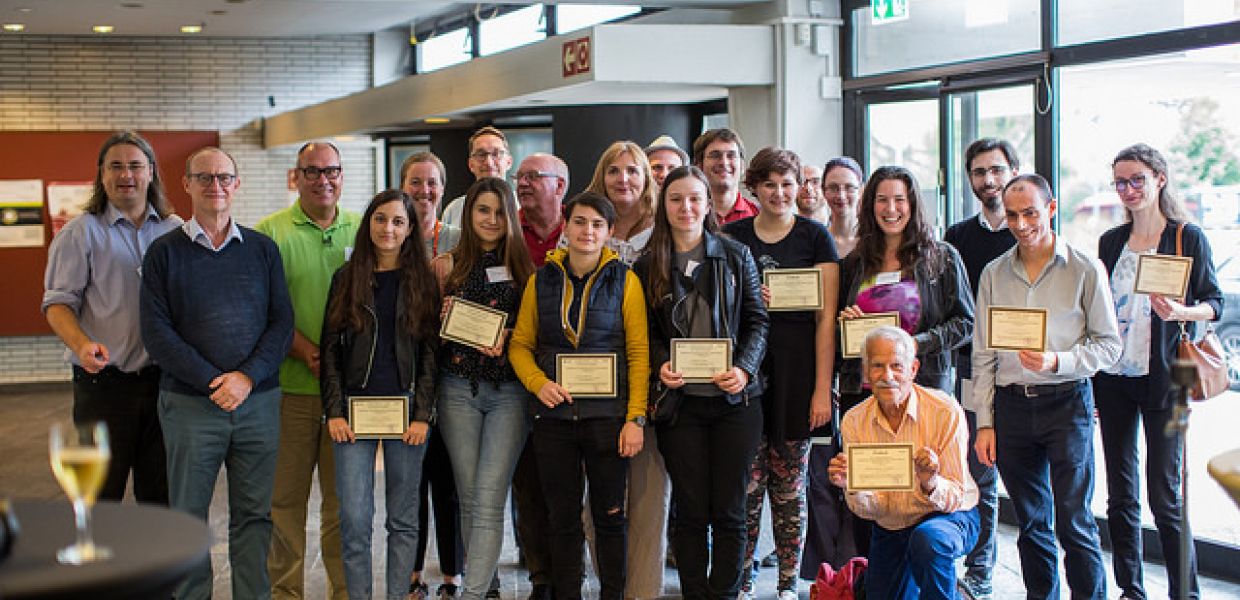Transcribathon winner uncovers the human perspective of war

On 22 and 23 June, the Europeana Transcribathon Campus took place at the Berlin State Library, gathering people from across Europe to enrich the Europeana 1914-1918 digital archive. Over two days, teams from three generations (participants were 15 to 83 years old) coming from Germany, UK, France, Italy, Belgium, Austria, Romania and even Syria competed with each other to digitally transcribe as many World War One documents as possible, and link them to other historical sources. On the second day, workshops invited the audience to share their experiences about transcription, data enrichment and the linking of various historical sources. Karl Pineau from France was crowned the ‘overall individual winner’ after he completed over 100 French documents with a staggering 45,855 characters in total (see detailed results about all the winners). We asked him to tell us about the experience.
Why did you want to get involved in the Transcribathon?
I discovered the Transcribathon via my work: my job is to build a collaborative transcription platform for the French national archives and the archives of the Yvelines, and we are really interested in the work achieved by the Transcribathon. We focus on wills by French soldiers from World War One, and specifically on their way of speaking about death, so both our projects are very similar. But I am also involved on a personal level, and transcribe documents from World War One with my girlfriend. It is really interesting to follow life stories of individual characters (soldiers, most of the time). Once you start transcribing a document, you want to get to the end to know the whole story.
What were the biggest challenges transcribing analogue data into digital data?
Transcribing documents from the 20th century is actually not that complicated. The handwriting is usually recognizable and most of the time even more readable than nowadays! The most challenging part would be the indexation. It is necessary to specify the locations, the languages or the topics of a document to help index it. Sometimes, it can be hard to identify the different places described, because the document is not specific enough. Although I think people shouldn’t take it as a challenge, but more as an opportunity to discover new stories.

Sebastiaan ter Burg, CC BY. See more pictures of the event here
What did you enjoy about the collaborative aspect of the event?
As with many cultural heritage collaborative projects, transcription is mostly a solitary job which requires a strong focus on the document and the story. But the Transcribathon events allow you to meet people with similar hobbies, and to share experiences or feedback. It is also a good way for people who have never done transcription to discover it with the help of experienced users. Of course, the competition aspect is challenging, and it is nice to be rewarded, but meeting people is more about sharing experiences than competing against each other.
Among the hundreds of French documents you transcribed, are there any stories that really struck you?
This is a complicated question! Each document is the story of a man who took part in the war, and sometimes even died, so it would be hard to say that a document didn’t strike me. If I should pick two, the first would be the story of a former French prisoner in a German camp near Berlin (Zossen) who wanted to write about prisoners’ life in camps.There is a striking moment when he explains that people don’t understand how a prisoner’s life could be hard when so many soldiers died at the front. There is also a book of poems written by a soldier before and during the war. There are almost 40 poems over 100 pages, most of them being love stories. He also drew pictures to illustrate his characters. But he never mentioned the war or the front: writing was probably a way for him to escape. The sad part is that he died during this war. His name was Léon Frédéric Boulin.
Why would you recommend taking part in Transcribathons?
It is a way to understand what war is, not from an historical point of view but from a human perspective. And it can also help research in digital humanities, and allow digital cultural heritage institutions to provide better content. There is no existing technology that reads handwritten texts, and we need help from the public to make them searchable and usable by researchers.
We would like to thank all speakers involved for their presentations on the second day of the event: Reinhard Altenhöner (Berlin State Library) and Harry Verwayen (Europeana Foundation) for their welcoming words, but also Frank Drauschke (Facts & Files) who presented the future plans of Europeana 1914-1918, and Clemens Neudecker of Europeana Newspapers; Barbara Fischer (Wikimedia Germany) who talked about the Wikisource/Wikidata transcription community; Stephan Bartholmei (German Digital Library) who outlined the importance of data enrichment for the German Digital Library; and Barbara Denicolo (University of Innsbruck) who introduced the online transcription tool Transkribus.
See the workshops agenda here, and more pictures of the event here.
